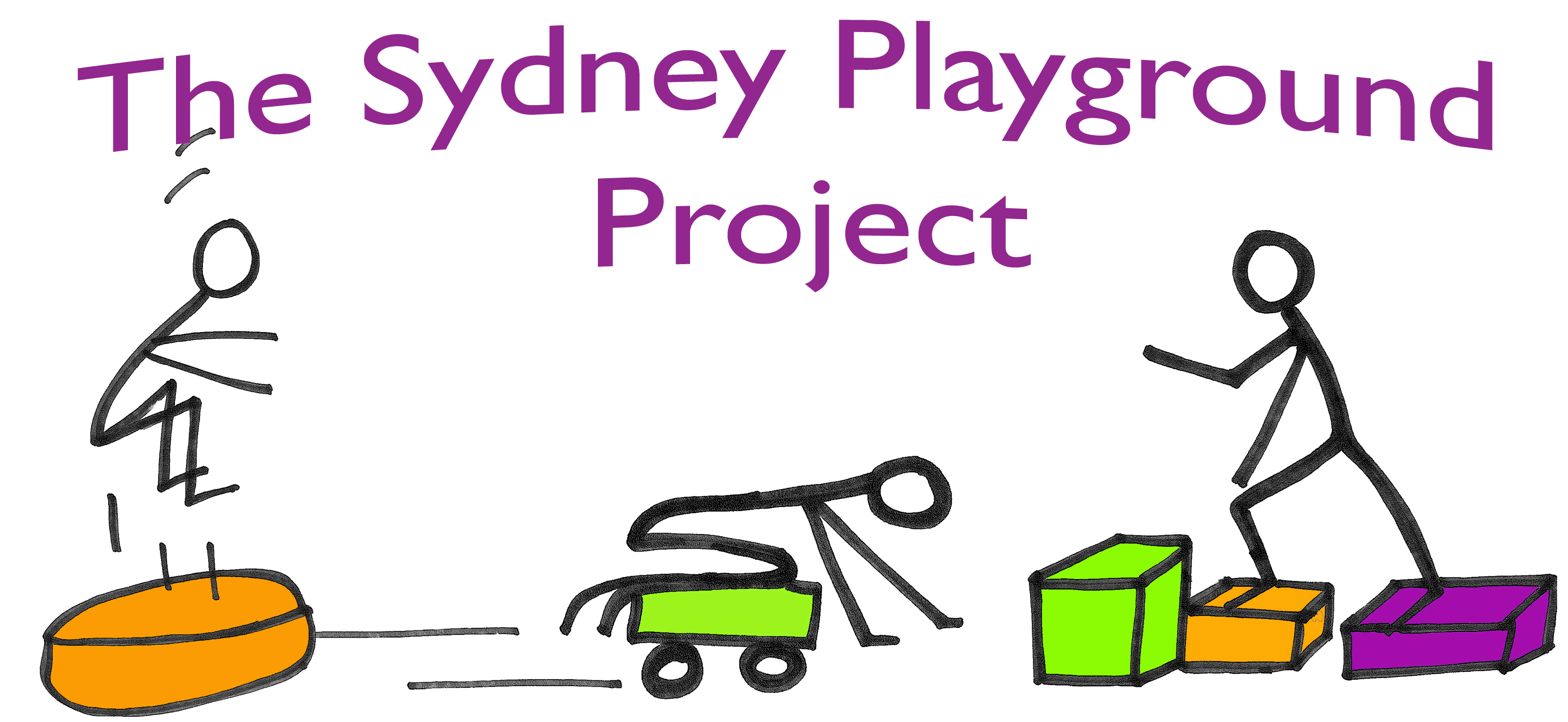BACKGROUND
Australian children today face many issues. Higher rates of obesity, bullying, and mental health issues have been reported across the country, and these matters tend to be inter-related. One possible explanation for these problems is the decreasing amount of outdoor play by children today. The Sydney Playground Project began in 2003 when Professor Anita Bundy gathered a number of people with interest and expertise in children’s health. These individuals shared the belief that play should be an integral part of children’s daily occupation and that play is beneficial in many different ways.
In 2011 we completed a 3-year National Health and Medical Research Council and Australia Research Council funded trial in 12 Sydney-based schools. The aim of this study was to increase social skills and physical activity of typically developing children and alter perceptions held by their parents and teachers. The findings from this study suggested that this methodology for addressing the above aims was both feasible and appropriate. Results of this study revealed that when the unconventional play materials were introduced:
-
Children engaged in wonderfully creative, social and active play.
-
‘Marginalized children’ (including children with disabilities) were included in play sessions.
-
Play and physical activity increased; sedentary behaviour decreased.
Our qualitative findings focusing on parents and teachers also revealed that adults:
-
Came to understand the benefits of manageable risk in play.
-
Leaned new strategies for promoting manageable risk-taking.
-
Enjoyed thinking about what children can do, rather than what they should not do.
In 2014 the team began its second trial. This 3-year trail focused on five Sydney-area primary-school-based programs for children with disabilities. The researchers also aimed to show increases in the level of responsibility children with disabilities take for their own actions. In addition, they aimed to demonstrate the effectiveness of simple, cost-effective interventions for changing the way parents and teachers view manageable risk-taking for children with disabilities.





